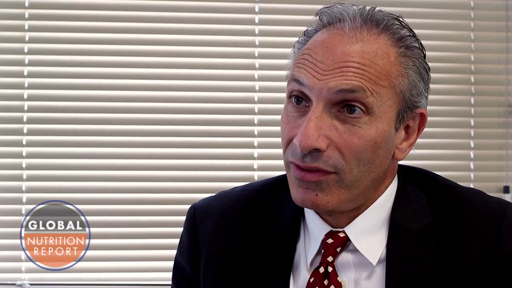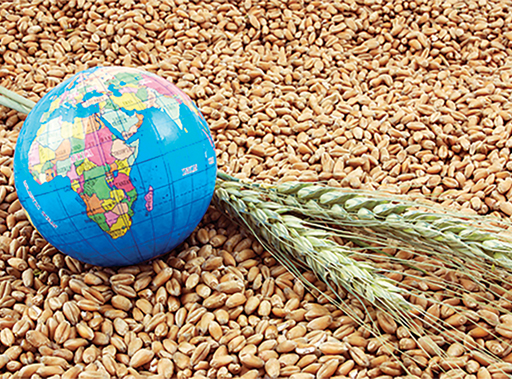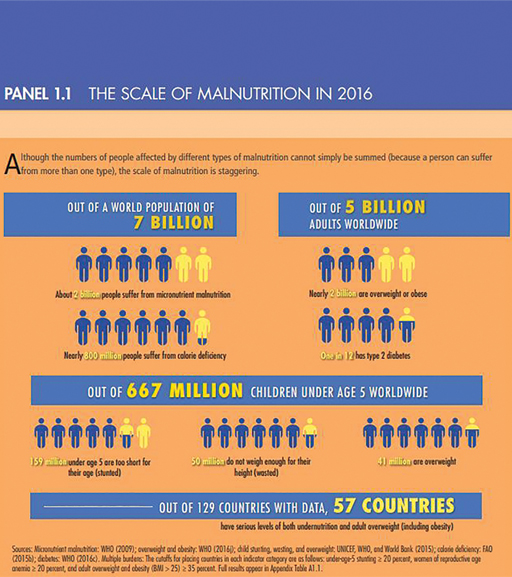4.1 The Global Nutrition Report
The 2016 report states:
‘END ALL FORMS OF MALNUTRITION BY 2030.’
That was the challenge world leaders laid down to all of us at the end of 2015 when they adopted the Sustainable Development Goals (SDGs).
It is a formidable challenge. Every country is facing a serious public health challenge from malnutrition … One in three people is malnourished in one form or another … Malnutrition manifests itself in many forms: as children who do not grow and develop to their full potential, as people who are skin-and-bone or prone to infection, as people who carry too much weight or whose blood contains too much sugar, salt, or cholesterol. The consequences are literally devastating … An estimated 45% of deaths of children under age 5 are linked to malnutrition … Malnutrition and diet are now the largest risk factors responsible for the global burden of disease – by far …
The current world population is about 7.5 billion. In 1955, it was approximately 2.76 billion and in 1990 approximately 5.3 billion. The world population clock forecasts that the population will rise to approximately 9.7 billion. You can find more details at the Worldometers website [Tip: hold Ctrl and click a link to open it in a new tab. (Hide tip)] .
In June 2016, the 2016 Global Nutrition Report was published. It focuses on ending malnutrition and is called ‘From Promise to Impact: ending malnutrition by 2030 (Figure 16). This is the third annual global report, showing sustained momentum and priority in ending all forms of malnutrition.
Activity _unit7.4.1 Activity 6 Global nutrition
Watch the following video and make notes on what is being said. How do you feel about global nutrition?

Transcript
Write down your thoughts in the box below. Click ‘Save’ when you are satisfied with what you have written.
The Global Nutrition Report states seven key findings
- Malnutrition creates a cascade of individual and societal challenges and opportunities.Malnutrition and poor diets constitute the number-one driver of the global burden of disease.
- The world is off-track to reach global targets — but there is hope. If we continue with business as usual, the world will not meet the global nutrition and Non-communicable Diseases (NCD) targets adopted by the World Health Assembly.
- Nutrition is central to the Sustainable Development Goals. At least 12 of the 17 sustainable Development Goals contain indicators that are highly relevant for nutrition, reflecting nutrition’s central role in sustainable development.
- Current commitments do not match the need. Given the scale of the malnutrition problem, current spending designed to overcome it is too low.
- Specific, Measureable, Attainable, Realistic and Timed (SMART) commitments and targets matter.The report finds that donors and governments that prioritised nutrition in their policy documents spent more on nutrition.
- We must move beyond talk to action. The report highlights the need to dramatically strengthen the implementation of both policies and programmes.
- Today’s data and knowledge are not sufficient to maximise investments. The report supports the call for a data revolution for nutrition.
Figure 17 shows the scale of global malnutrition in 2016.



